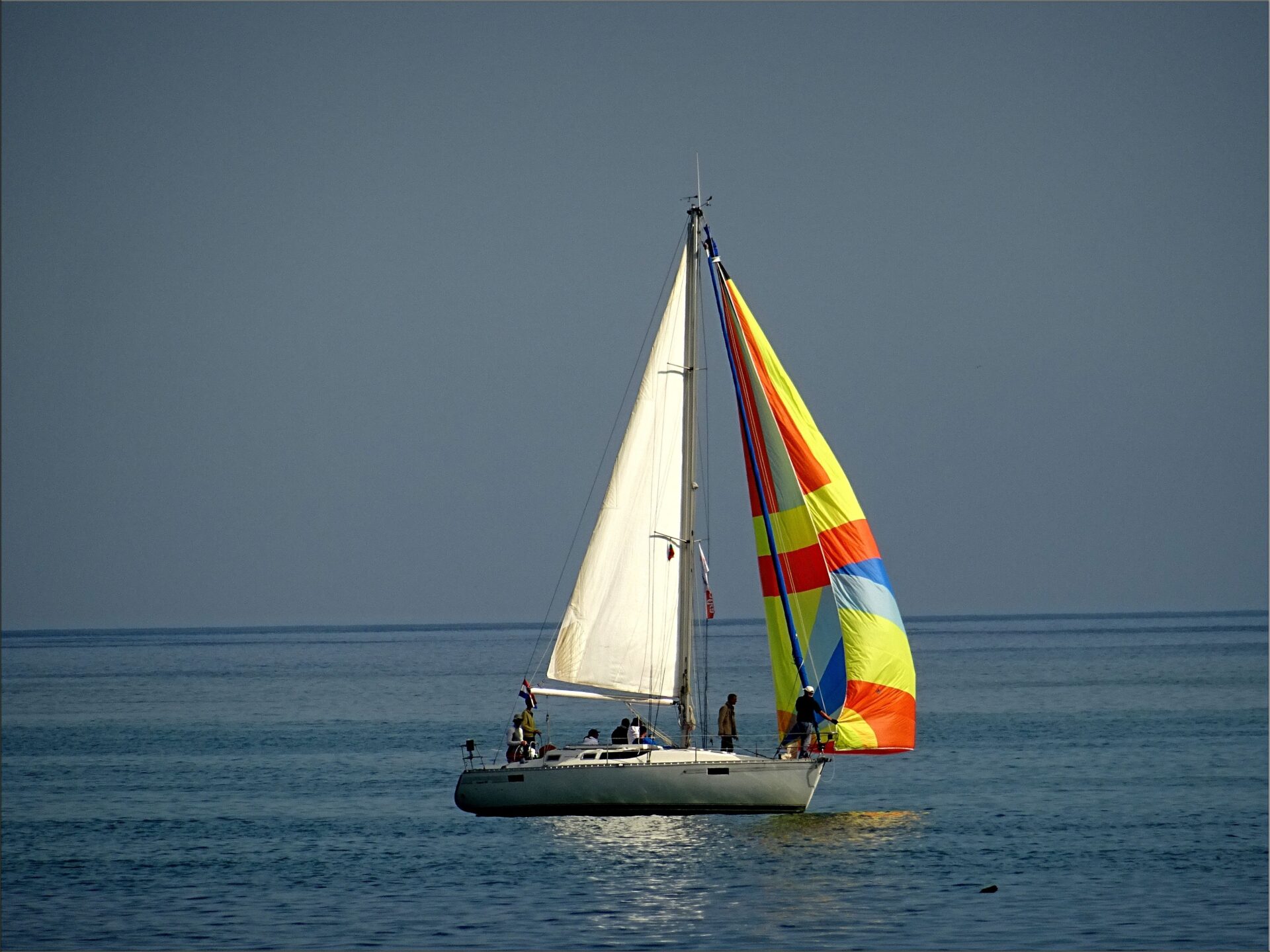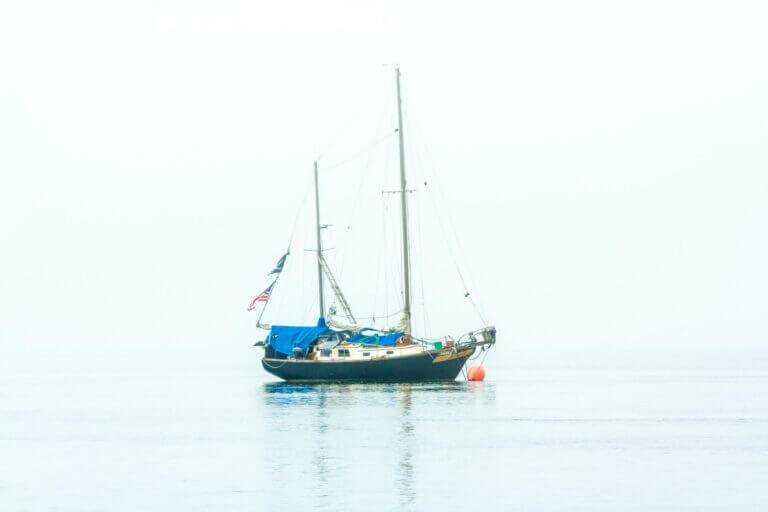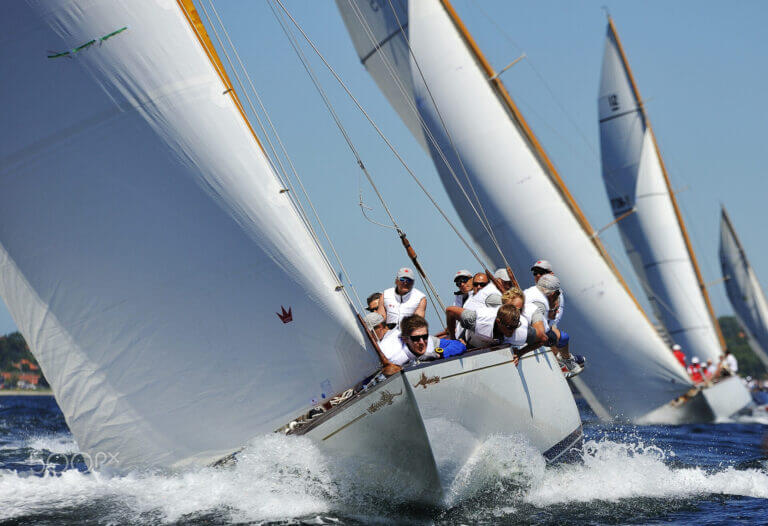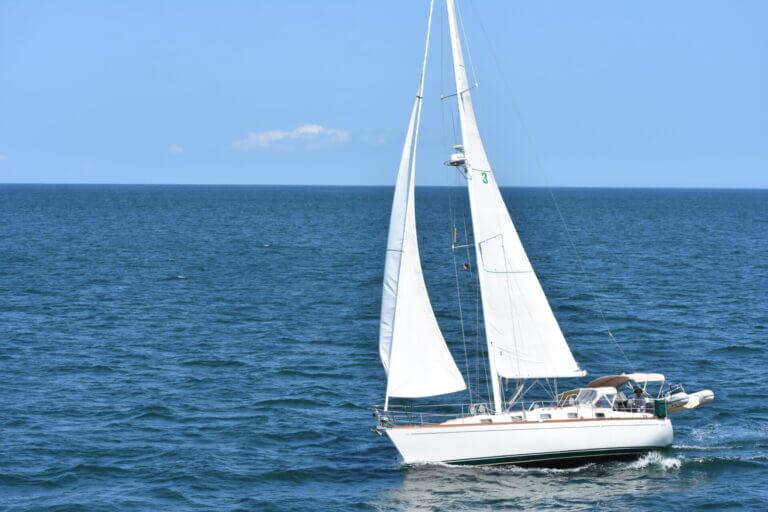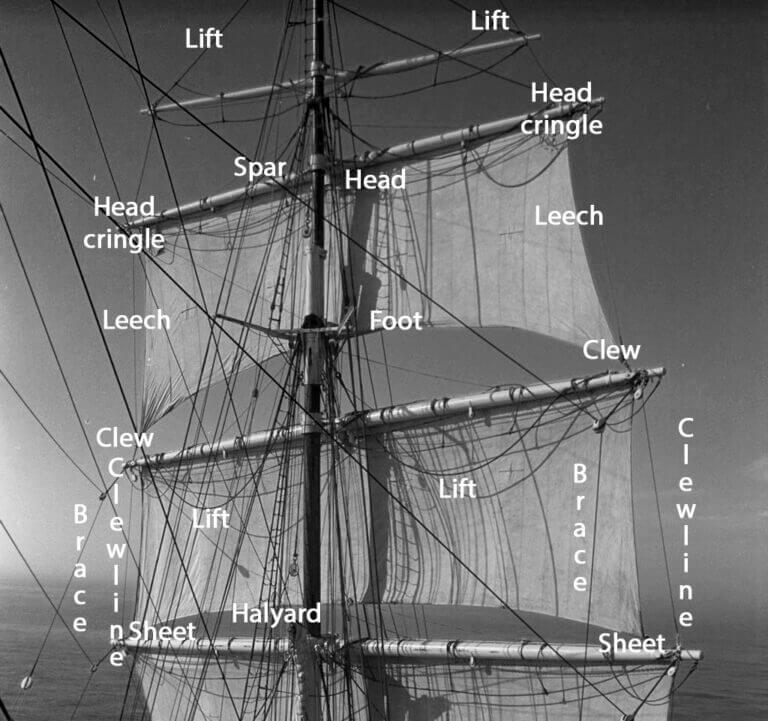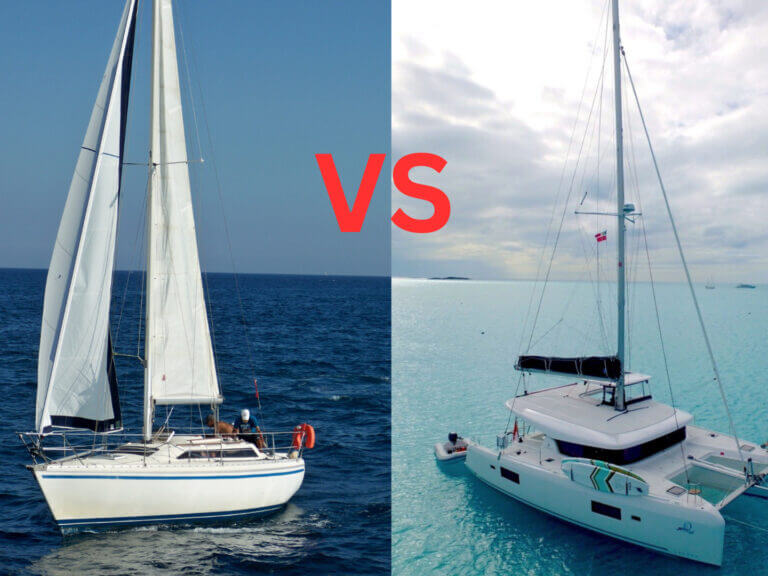Types of Sails: A Comprehensive Guide
In the enchanting world of sailboat dynamics, where the dance between wind and water takes center stage, the significance of sails cannot be overstated. Like the wings of a bird, these meticulously crafted sails unfurl to catch the slightest whisper of breeze, converting it into a powerful forward thrust that carries us through the vast expanse of the ocean. They are the very essence of a sailboat, the conduits through which dreams and aspirations set sail.
Join us on a captivating voyage as we unfurl the secrets of the myriad types of sails adorning the mastheads of sailboats across the globe. From the grandeur of the mainsail, proudly dominating the skyline, to the nimble headsails that steer with precision, and the enigmatic mizzensails that add an extra touch of finesse, we shall embark on a comprehensive exploration of the diverse array of sail types.
Different Types of Sails on a Sailboat: Why Use Different Sails at All?
Different Sail Types for Different Wind Conditions
Triangular sails, such as the mainsail and jib, are commonly used on modern sailboats to optimize performance when sailing upwind. The shape of these sails helps to create lift, which propels the boat forward even against the wind’s direction. The mainsail is attached to the mast at the front edge and a boom at the bottom. Jibs, on the other hand, are headsails that are attached to a stay near the bow of the boat.
Balloon sails, like spinnaker sails, are designed for downwind sailing and catching more wind to increase boat speed when sailing with the wind behind it. These types of sails have a large surface area that allows them to catch more wind than triangular sails. Spinnaker sails can come in different shapes depending on their intended use and can be flown from a spinnaker pole or directly from the bow.
Sail Plans: Different Combinations for Different Boats
Sail plans refer to how different types of sails are arranged and combined on a sailing craft. Sail plans can vary depending on specific design features and intended use of boats. For example, some boats may have multiple masts with several triangular-shaped sails attached while others may only have one mast with one triangular sail (mainsail) and one square sail (spinnaker). The combination of different types of sails can also affect how easy it is to handle a boat under certain conditions.
Understanding Sail Anatomy
Head, tack, foot, luff, leech, and clew. These are the different parts that make up a sail’s anatomy. But what exactly are they and why are they important? In this section, we’ll take a closer look at each part and how it contributes to the performance of a sailboat.

The Head: The Top of the Sail
Starting from the top, we have the head of the sail. This is where the halyard (the rope or wire used to hoist the sail) is attached. The head determines how high or low the sail sits on its mast. A higher head means more power but less control over the sail’s shape. Conversely, a lower head provides better control but less power.
The Tack: The Lower Front Corner of the Sail
Next is the tack which is found at the lower front corner of most sails. It’s where one end of a line called a “sheet” attaches to control how much wind enters through this corner of your sail. Adjusting your sheet will affect your boat’s speed and direction.
The Foot: The Bottom of the Sail
At the bottom edge of any sail lies its foot which helps determine its overall shape and size. Generally speaking, longer feet result in larger sails that provide more power while shorter feet result in smaller sails with better maneuverability.
The Luff: The Forward Edge of the Sail
The forward edge of any sail is called its luff which runs along its mast track or forestay depending on what type of rigging you have set up on your boat. It helps maintain proper airflow over your sails by keeping them from flapping around too much in high winds.
The Leech: The Back Edge of Your Sail
Opposite from your luff is your leech – or back edge – which helps create lift by allowing air to flow smoothly over your sail. A longer leech will result in a more powerful sail, while a shorter one will provide better control and maneuverability.
The Clew: The Bottom Back Corner of Your Sail
Lastly, we have the clew which is found at the bottom back corner of most sails. It’s where the other end of your sheet attaches to control how much wind enters through this corner of your sail. Adjusting your sheet here can affect how well you’re able to steer your boat.
Primary Sail Types
Mainsail
The main sail is attached to the main mast and boom and can be adjusted to match the wind conditions. Its main purpose is to keep the boat steady and under control by providing stability to the stern (back) of the vessel.
There are several variations of mainsails that sailors can choose from depending on their needs. One popular type of mainsail is an in-mast furling mainsail. This type of sail can be easily furled and unfurled by pulling a line, making it ideal for short-handed sailing or cruising. Another variation is a slab reefing mainsail, which has horizontal strips called battens that help maintain its shape. Finally, there is also a boom furling mainsail, which uses a roller system inside the boom to make it easier to handle.
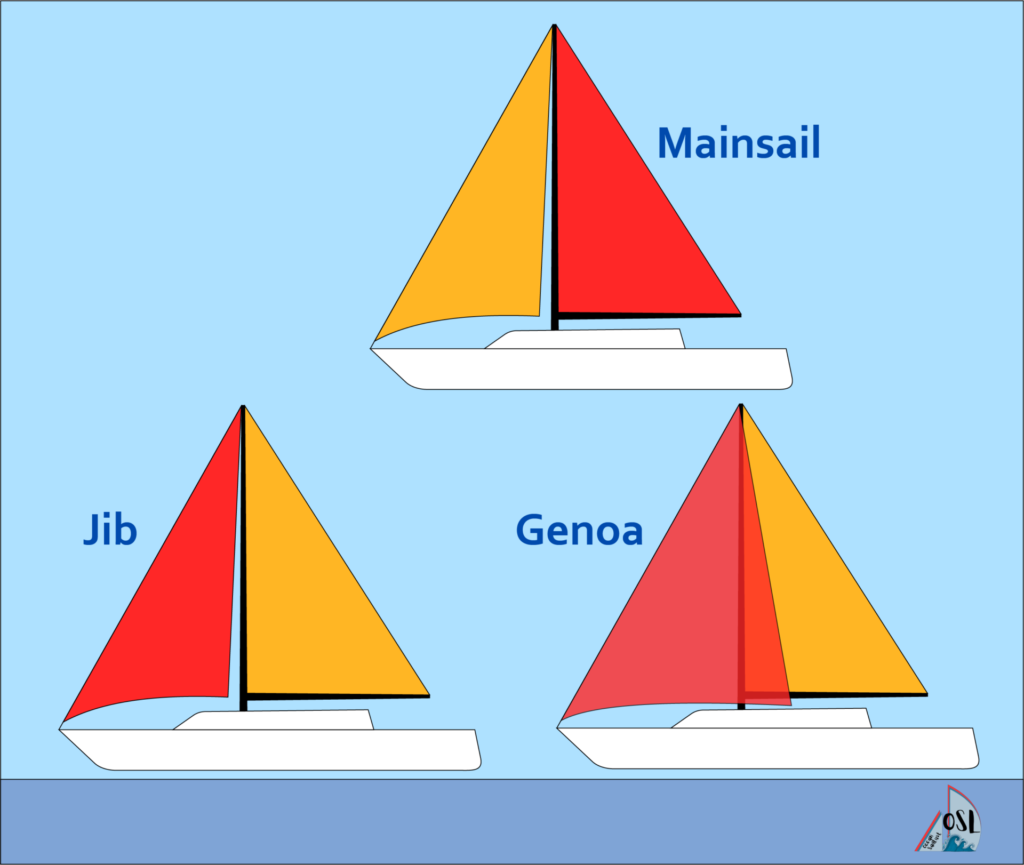
Headsail
A headsail is any sail located forward of the mast on a sailing vessel. These sails are designed to work in conjunction with the main sail to provide optimal performance under varying wind conditions. There are several types of headsails available, each with its own unique characteristics and purposes.
Genoa
One popular type of headsail is known as a genoa. This large foresail extends beyond the mast and overlaps with the main sail, providing additional power when sailing upwind or reaching across wind angles. Genoas come in various sizes ranging from 110% up to 150%, depending on how much overlap you want.
Jib
Another common type of headsail is called a jib. This smaller foresail does not overlap with the main sail but instead works in conjunction with it. The jib is typically used in higher wind conditions when a smaller sail area is needed to maintain control of the boat.
Staysail
A staysail is a smaller sail located between the mast and the forestay. This type of headsail is typically used on larger boats to provide additional power when sailing upwind or reaching across wind angles. Staysails are often used in conjunction with other sails, such as a genoa or main sail.
Mizzensail
Finally, there is also a mizzensail, which is located aft of the main mast on ketches and yawls. This sail provides additional power when sailing downwind or reaching across wind angles. Mizzensails come in various sizes and can be either fully battened or free-flying.
Lightwind Sails
Spinnaker
Spinnaker sails are a type of downwind sail that can be used to increase boat speed when sailing in light winds. They are typically used in wind conditions below 10 knots, which are considered light air sails. Spinnakers come in two types: symmetrical and asymmetrical.

Symmetrical vs Asymmetrical Spinnaker
The symmetrical spinnaker is designed to sail directly downwind or with the wind coming from behind the boat. It is shaped like a balloon, with equal amounts of material on both sides of the sail. The sail is attached to a spinnaker pole, which extends out from the mast and holds the sail away from the boat.
Asymmetrical spinnakers, on the other hand, are designed for sailing at angles off the wind. They have an uneven shape, with more material on one side than the other. This design allows them to be flown without a spinnaker pole, making them easier to handle for smaller crews.
Gennaker
Another type of downwind sail is called a gennaker. Gennakers are similar to asymmetrical spinnakers but have a hybrid characteristic between a spinnaker and a genua. They are designed for reaching or running downwind at higher speeds than traditional cruising chutes or asymmetric spinnakers.
Parasailor
For those who prefer an even more user-friendly option than asymmetrical spinnakers or gennakers, parasailors might be what you’re looking for! A parasailor combines aspects of both a traditional spinnaker and a parachute into one easy-to-use package. The unique design of this sail makes it ideal for use in light winds when other sails may not perform well enough.
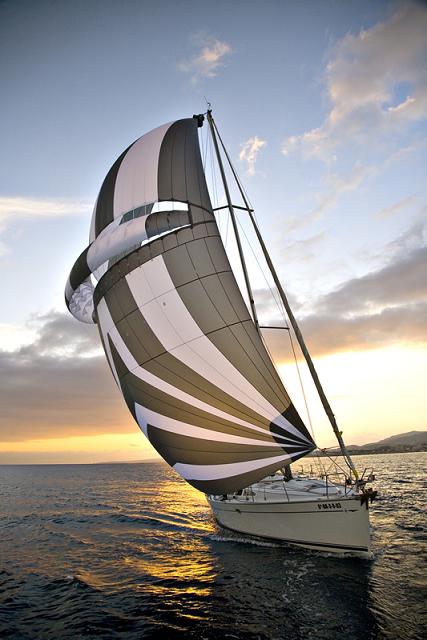
Code Zero
Finally, there’s another type of upwind/downwind sail called the code zero. Code zeros are designed to be used in light winds when sailing upwind, but they can also be used for reaching and running downwind. These sails have a flat shape that allows them to generate lift even in very light wind conditions.
Heavy Weather Sails
Heavy weather sailing is a challenging and potentially dangerous activity. The use of heavy weather sails, such as trysails, is crucial to ensure the safety of sailors and their vessels.
Trysail
A trysail is a small triangular sail made of heavy-duty material, typically spinnaker cloth or other lightweight fabric. It is designed to be used in stormy weather conditions when winds are high and the seas are rough.
The role of a trysail is to provide an alternative source of propulsion when the main sail or jib cannot be used. In addition, it helps reduce the heeling effect on the vessel caused by strong winds. Trysails are rigged using a separate halyard and can be set up quickly when needed.
A trysail should be used in severe weather conditions when winds exceed 40 knots or more. It is recommended that sailors practice setting up their trysail before they need it so that they can do it quickly and efficiently in an emergency situation.

Storm Jib
Another type of heavy weather sail that every sailor should have on board is a storm jib. This sail is typically much smaller than a regular jib and made from heavier materials such as Dacron or nylon. Its purpose is to provide additional stability during high wind speeds and rough seas.
The features of a storm jib include its size, shape, and weight distribution. It has a large luff (the leading edge) which allows it to be hoisted higher up on the rigging than other sails. This helps keep the boat stable during high-speed sailing in strong winds.
A storm jib should be used in extreme weather conditions where wind speeds exceed 50 knots or more. When using this sail, it is important to ensure that the halyard is properly tensioned and that the sail is sheeted in tightly. This will help prevent any unnecessary movement or fluttering of the sail.
Overview Common Sail Types
Jib
Headsail
triangular
100% of foretriangle
Moderate – High
All Angles
Genoa
Headsail
triangular, overlapping
110% – 150% of foretriangle
Light – Moderate
All Angles
Staysail
Headsail
triangular
60% – 80% of foretriangle
Moderate
Close Reach – Broad Reach
Spinnaker
Lightwind, Downwind
balloon shape, free flying
200% of mainsail (or even more)
Light
Broad Reach, Running
Parasailor
Lightwind, Downwind
parachute shape
100% of spinnaker
Light
Broad Reach, Running
Gennaker
Lightwind, Downwind
balloon shape, free flying
80% – 85% of spinnaker
Light – Moderate
Broad Reach, Running
Code Zero
Lightwind, Upwind
Flat
75% of spinnaker
Light
All Angles
Mizzensail
Mizzensail
triangular
30% – 60% of mainsail
Light – High
All Angles
Trysail
Mainsail, heavy weather
triangular
17.5% of mainsail (or less)
very high
All Angles
Storm Jib
Headsail, heavy weather
triangular
max. 65% of the hight of the foretriangle
very high
All Angles
Unconventional Sails
Wing Sails
Wing sails are a type of sail design that is not commonly used in traditional sailboat designs. They are essentially vertical airfoils that generate lift and propulsion by directing the wind over the surface of the sail. Wing sails have become increasingly popular in modern sailing craft, particularly in high-performance racing boats.
One of the main advantages of wing sails is their ability to produce a significant amount of power with very little heeling force. This means that they can be used effectively in high-wind conditions without causing the boat to tip over. Additionally, wing sails are highly efficient at sailing upwind, which allows sailors to point higher into the wind than with other types of sails.
While wing sails may seem like a relatively new concept, they have actually been around for quite some time. The first recorded use of a wing sail was by German engineer Wolfgang Zimmermann in 1959. Since then, many different variations on the design have been developed and tested.

Kite Sails
Kite sails are another unconventional type of sail that has gained popularity in recent years. Unlike traditional downwind sails such as spinnaker or parasailors, kite sails are flown from a line attached to the bow of the boat and do not require a mast or boom.
Sail Materials and Technology
Traditional Sail Materials
Sails have been used for thousands of years to harness the power of the wind and propel boats across water. Traditional sail materials were flax, hemp, or cotton. These natural fibers were woven together to create a strong, yet flexible material that could withstand the harsh conditions at sea. However, as technology advanced and sailors began to demand more from their sails, new materials were developed.
Modern Sail Materials
Modern sailboats use synthetic materials such as polyester, nylon, or laminated fabrics for their sails. These materials are lightweight and incredibly strong, allowing sailors to achieve greater speeds with less effort. They are also more durable than traditional sail materials and can withstand prolonged exposure to sunlight and saltwater.
Popular Sail and Mast Configurations

Sloop Rig
The sloop rig is one of the most popular sail plans for modern sailboats. It features a single mast and one headsail, like a jib or genoa. The mainsail is typically triangular in shape and hoisted up the main mast using a backstay to support it. The jib or genoa is attached to the forestay that runs from the top of the mast to the bow of the boat.
Cutter Rig
Another popular sail plan is the cutter rig, which also features a single mast but has two headsails – an overlapping jib and a smaller staysail. The mainsail is still triangular in shape and hoisted up the main mast with a backstay for support.
Ketch Rig
Moving onto two-masted rigs, we have ketch rig, which features a main mast and a shorter mizzen mast located in front of the rudder. The mainsail is still triangular in shape and hoisted up the main mast with a backstay for support, while the mizzen sail is generally smaller and triangular or quadrilateral in shape.
Yawls Rig
Lastly, we have the yawl rig which is similar to the ketch rig but has its shorter mizzenmast located aft of the rudder. The mainsail is still triangular in shape and hoisted up the main mast with a backstay for support, while the mizzen sail is generally smaller and triangular or quadrilateral in shape.
Conclusion: Understanding the Different Types of Sails
Understanding the Different Types of Sails is crucial for any sailor who wants to optimize their performance and safety on the water. Whether you’re racing, cruising or simply enjoying a day out on your sailboat, having the right sails for the conditions can make all the difference.
Ultimately, understanding the different types of sails is essential for any sailor looking to improve their skills on the water. By selecting the right sail for your boat and conditions, you can optimize your performance while staying safe and comfortable during your time at sea.
So whether you’re a seasoned sailor or just starting out, take some time to explore the various types of sails available and find the ones that work best for you. With a little knowledge and experience under your belt, you’ll be well on your way to mastering this exciting sport!

